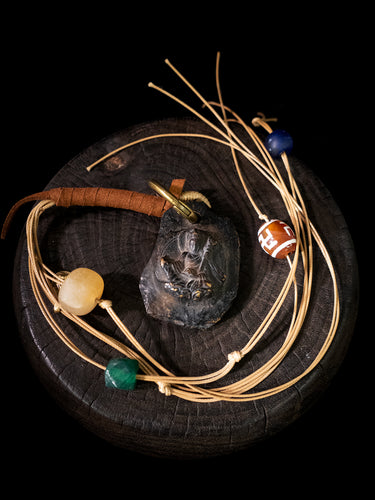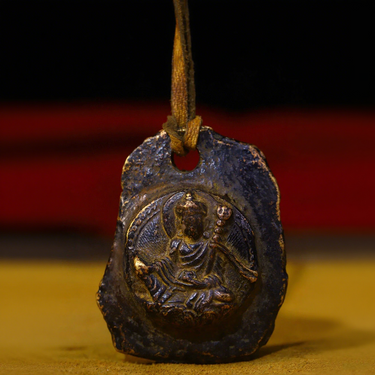
Thangka Art
"Thangka" (ཐང་ཀ་) is a Tibetan term that refers to a scroll painting, typically created on fabric with mineral-based paints, and then framed and hung for worship. Thangka can be categorized into two main types: "Guo Thangka" (Craft Thangka) and "Zhi Thangka" (Painted Thangka). The "Guo Thangka" category includes techniques like raised embroidery, embroidery, and woven embroidery, while "Zhi Thangka" is distinguished by its background colors, such as Red Thangka, Black Thangka, Gold Thangka, and Colored Thangka.

Unlike regular paintings, which fade and lose their vibrancy over time, Thangkas remain bright and vivid for centuries. The secret to their lasting color lies in the unique pigments used to create them. The paints used in Thangkas are made from all-natural materials, and they can be classified into nine types: earth, stone, water, fire, wood, grass, flowers, bone, and precious gems. Most Thangkas use pigments made from lapis lazuli, cinnabar, malachite, tortoiseshell, saffron, gold, silver, Dzi beads, coral, and turquoise, among others.

n rare cases, certain Thangkas may include human materials such as blood, bone, or skin, following specific religious practices. Tibetan Buddhism, primarily based on Vajrayana (Tantric Buddhism), has a unique spiritual ritual called "Visualization Practice" where practitioners focus on a deity and unite body, speech, and mind in their spiritual work.
In Tibetan color symbolism, white is considered the most sacred color, representing the purity, light, goodness, peace, and compassion of the sun, moon, and stars. Black, on the other hand, symbolizes the opposite, representing "emptiness" (in Buddhist terms, "endings"), and is associated with hells, ghosts, and demons, symbolizing evil, darkness, and fear.
Beyond black and white, the other colors in Thangka have deep connections to nature and Buddhist teachings. Red often represents flowers or fire, conveying passionate emotions. Green symbolizes life and hope, often associated with plants and growth. Blue, the color of the sky and oceans, represents mystery and is used to depict vast, profound concepts like the cosmos. Yellow is the most exalted color, often associated with the Buddha Shakyamuni, symbolizing the omnipresence of the Buddha's light.
Thangkas are not limited to religious subjects; their artistic themes cover everything from economic politics, historical culture, religious beliefs, and daily life, to medicine, literature, and astronomy, making them a "Tibetan Encyclopedia" of sorts.

In Tibetan, Thangka artists are officially known as "Lajiba", meaning "the one who paints the deities." It is said that "the artist is living through the Thangka," and this is no exaggeration. Learning to create Thangkas can take over a decade, and even in the peak years of an artist’s life (typically two to three decades), creating a single Thangka can take anywhere from a few months to several years. Therefore, the number of Thangkas an artist can produce in their lifetime is extremely limited.

The ancient dreams of the plateau, the Buddhist teachings in the monasteries of Tibet. Thangkas carry the memories of past lives, with the mountain winds calling for colorful clouds and distant voices. To paint is to channel the heart, and creating a Thangka with true devotion is a form of spiritual practice.
One painting, one world. One brushstroke, one enlightenment.

























